
The Melbourne Free Hospital for Sick Children Established
September 9th, 1870
Dr William John Smith and Dr John Singleton opened the hospital in a six-bedroom house located at 39 Stephen Street.
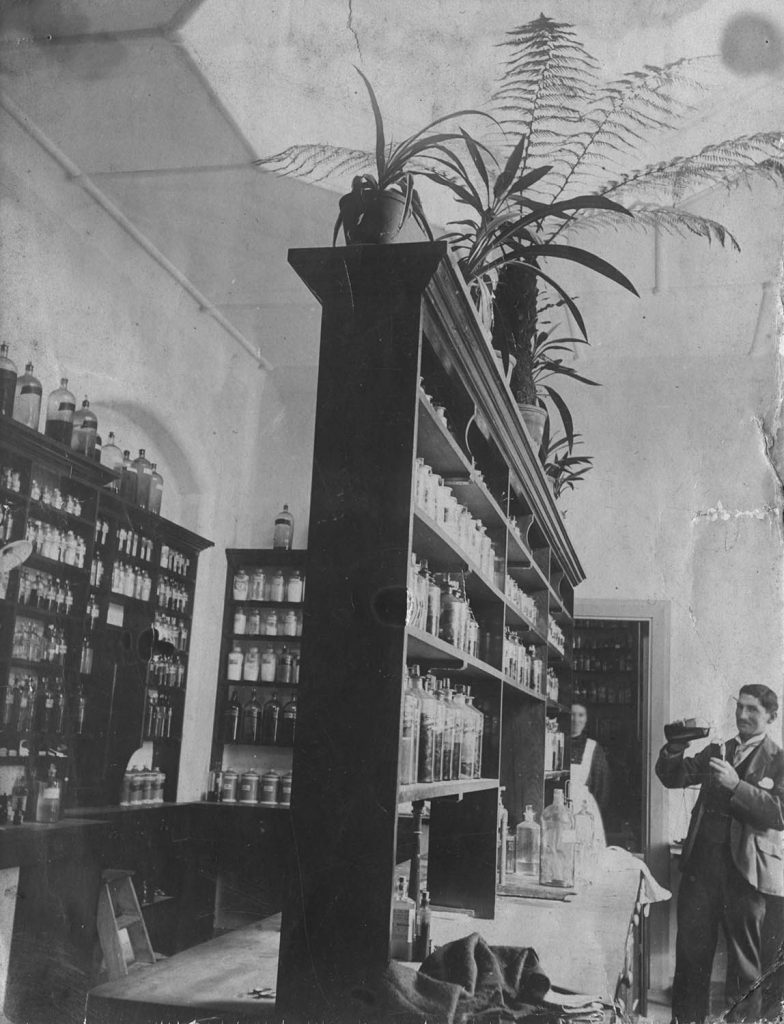
First Pharmacist
Robert Singleton, son of Dr John Singleton, ran the medicine dispensary.
Image details: First known photo of the hospital's pharmacy, circa 1917.

Relocation to 13 Spring Street
October 1873
The hospital moved to a larger premises with space for 15 beds. The name was changed to Melbourne Hospital for Sick Children.
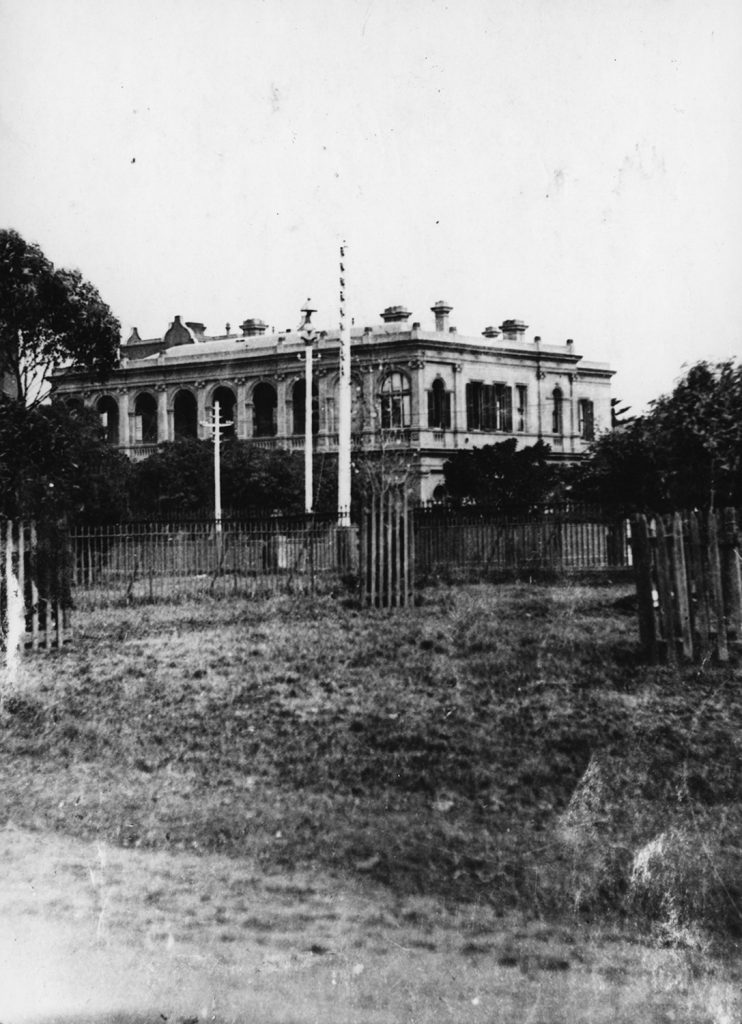
Purchase of Sir Redmond Barry’s House
In response to the increased need for larger premises, the Committee of Management purchased Barry’s house in Carlton for £10,000.

Move to Carlton Premises
The new hospital, with space for 24 beds, was opened by Sir George and Lady Bowen.
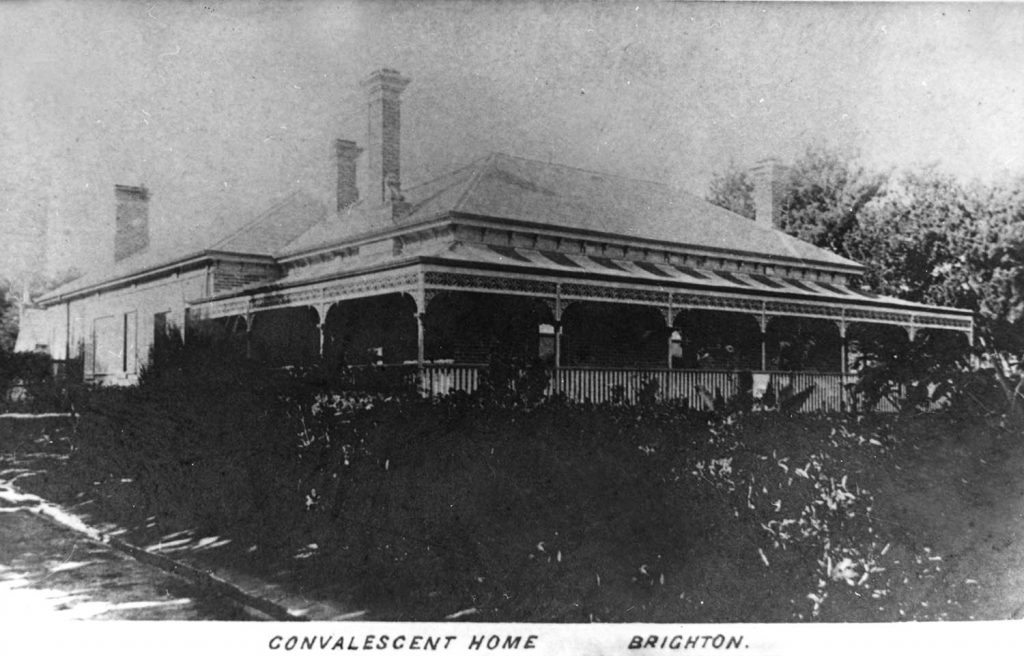
Brighton Convalescent Cottage
Opened in Holyrood Street, a short walk from Brighton Beach, the seaside location was intended to provide fresh air and sunshine to patients who were usually accustomed to life in inner-Melbourne slums.

Competition for a New Building Design
May 1896
The winning entry was not implemented, the committee inexplicably actioned a different design to replace Redmond Barry’s house.
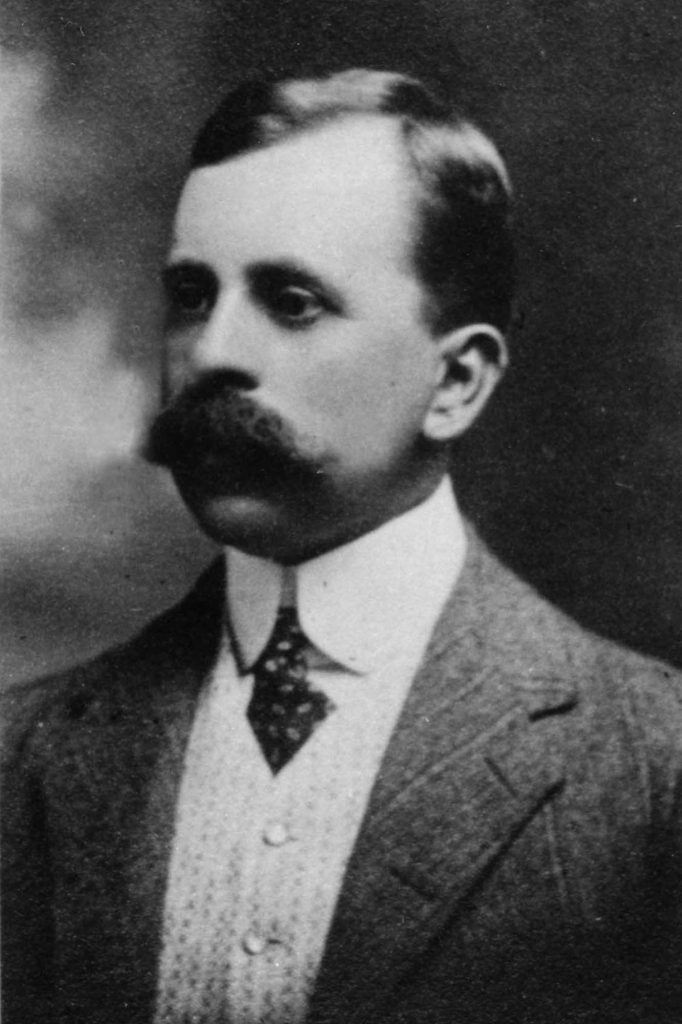
Radiology Department Established
Led by Dr Herbert Hewlett, the hospital kept abreast of diagnostic developments available with this new discipline and was the first Melbourne public hospital with a radiology department.

New Outpatients Building Opened on Drummond Street, Carlton
Development of the hospital responded to growth in the local population and an increase in patient demand.

Formal Ties Created With the University of Melbourne
Dr William Snowball joined the faculty of medicine. It soon became compulsory for medical students to complete some paediatric training at the hospital.
Image courtesy of the Medical History Museum, University of Melbourne.
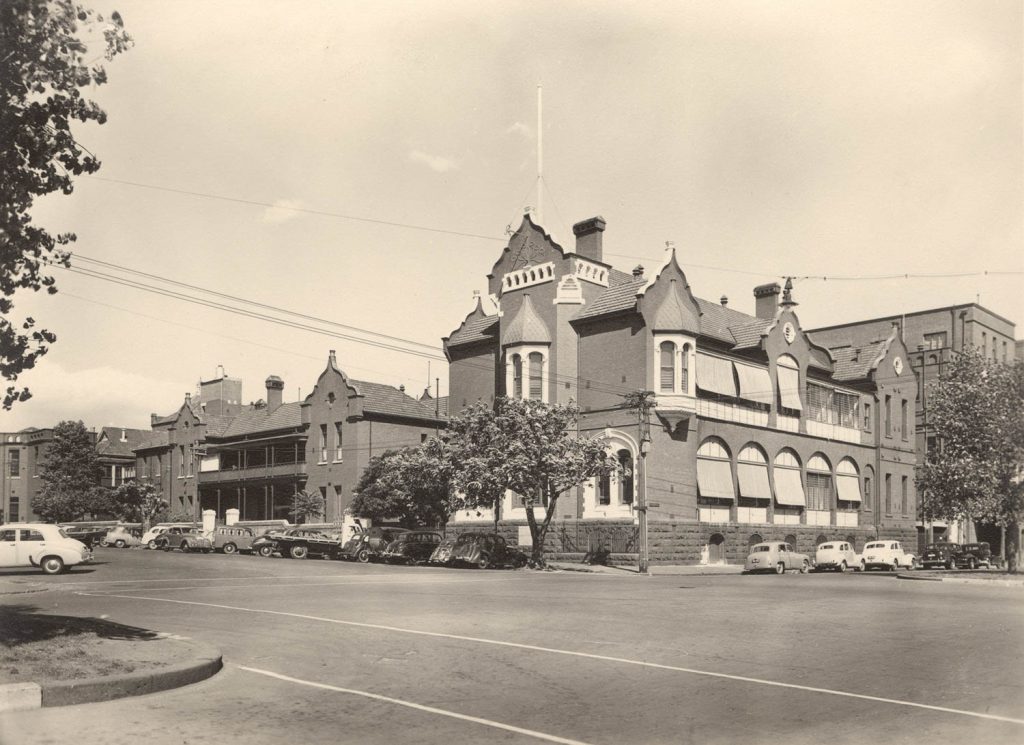
The Princess May Pavilion
Built on the corner of Pelham and Drummond Street in Carlton, the new building provided much-needed wards for inpatients.
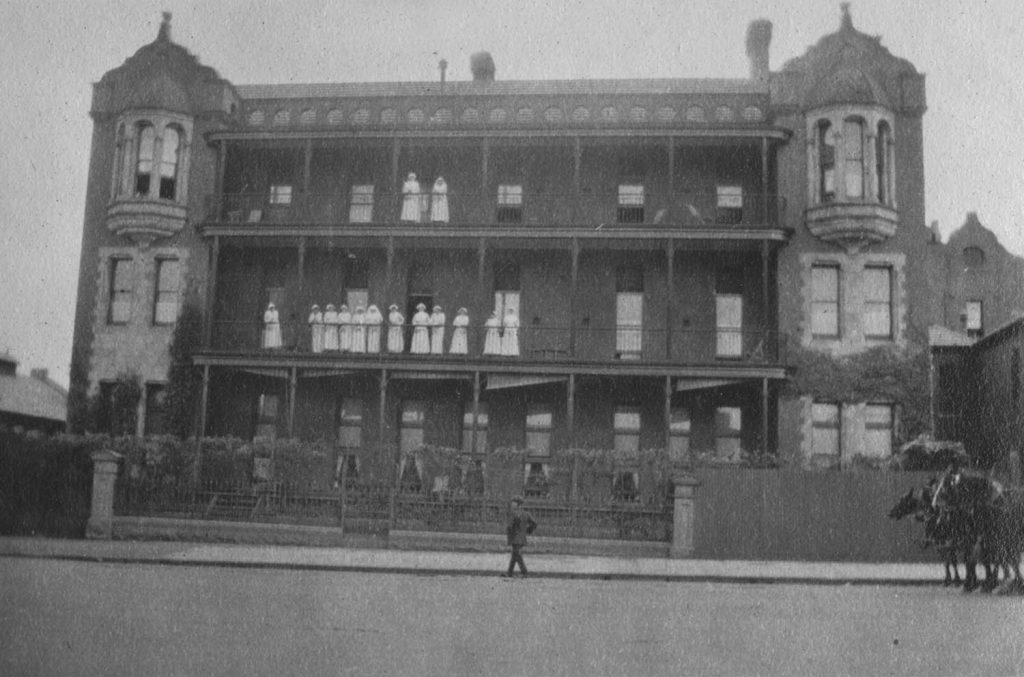
John Robertson Nurses’ Home
Opened on Rathdowne Street, the new nurses' home replaced damp and overcrowded pre-existing quarters.

Hampton Convalescent Home
'Edgecliff' on Beach Road in Hampton was purchased after the Brighton Convalescent Cottage was burnt down. Convalescent care was provided in Hampton until 1957.

First Splint Technician Hired
The splint workshop became a crucial service for the hospital, as well as an avenue of training and employment for prior patients.
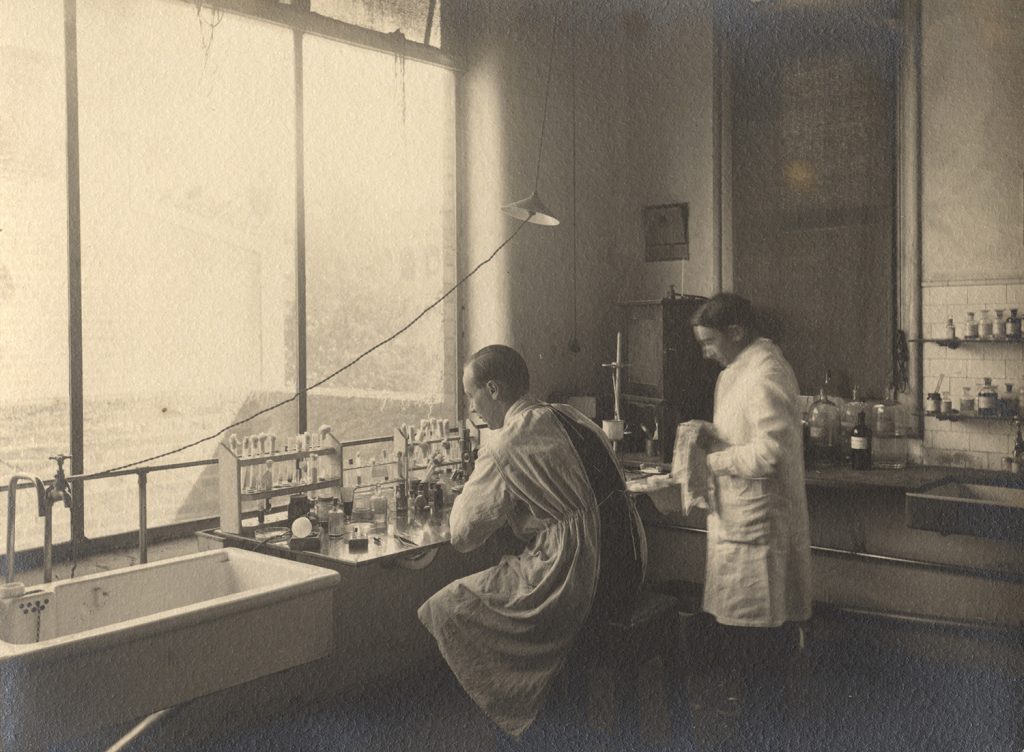
Pathological Laboratory Block Opened
The laboratory was a key element of the hospital’s diagnostic and research toolkit.

The Edward Wilson Pavilion
Built in place of the old Redmond Barry house on Rathdowne Street, the Edward Wilson Pavilion housed 40 surgical and 20 medical beds, as well as two operating theatres.
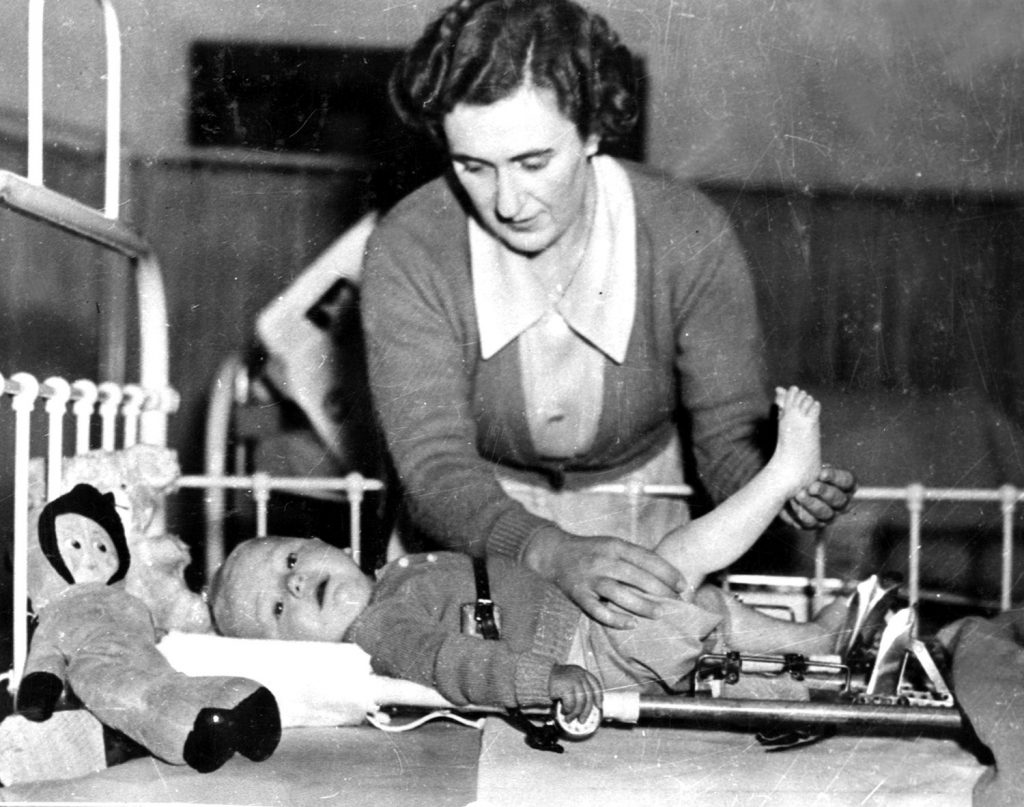
Increase in Physiotherapy Treatments
A polio epidemic in Victoria saw a need for the hospital to hire more physiotherapists, further solidifying the role of physiotherapy as a key aspect for after-care of patients.
League of Former Trainees and Associates (LOFT) Established
LOFT supports an annual scholarship for nursing research and provides a platform for members to maintain relationships and connections with the hospital.
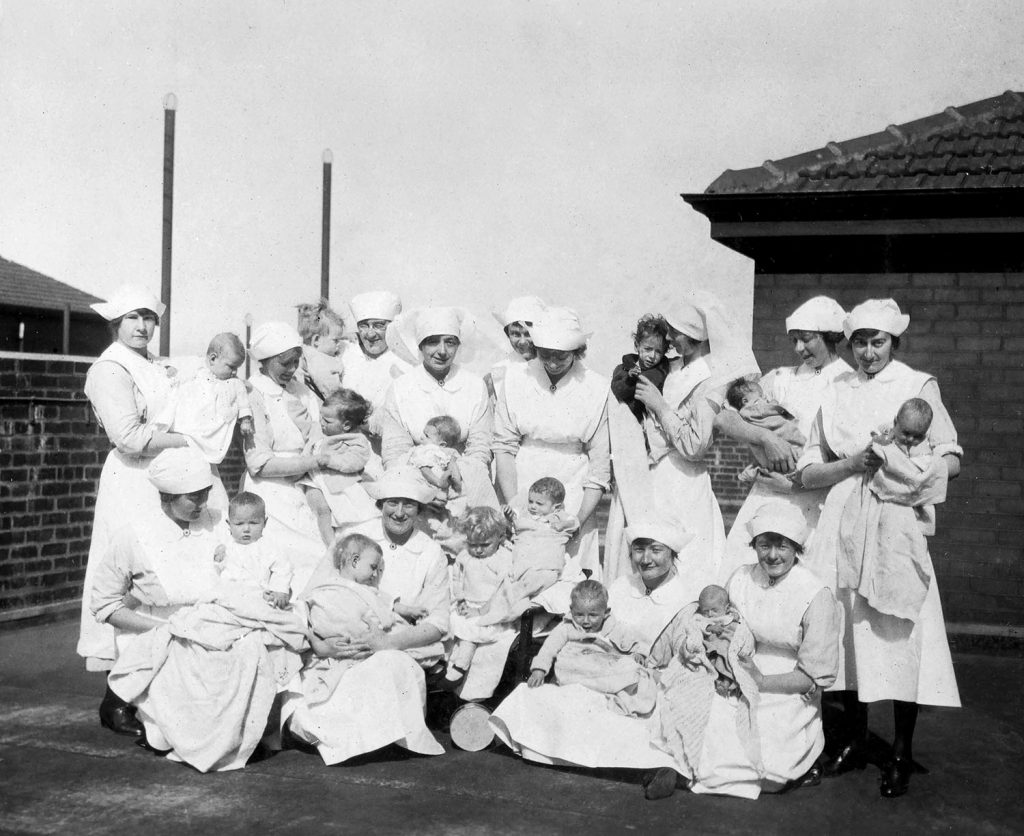
First Babies’ Ward in Melbourne Opened
A public appeal was held in 1919 to raise funds to build a specialised ward for babies.
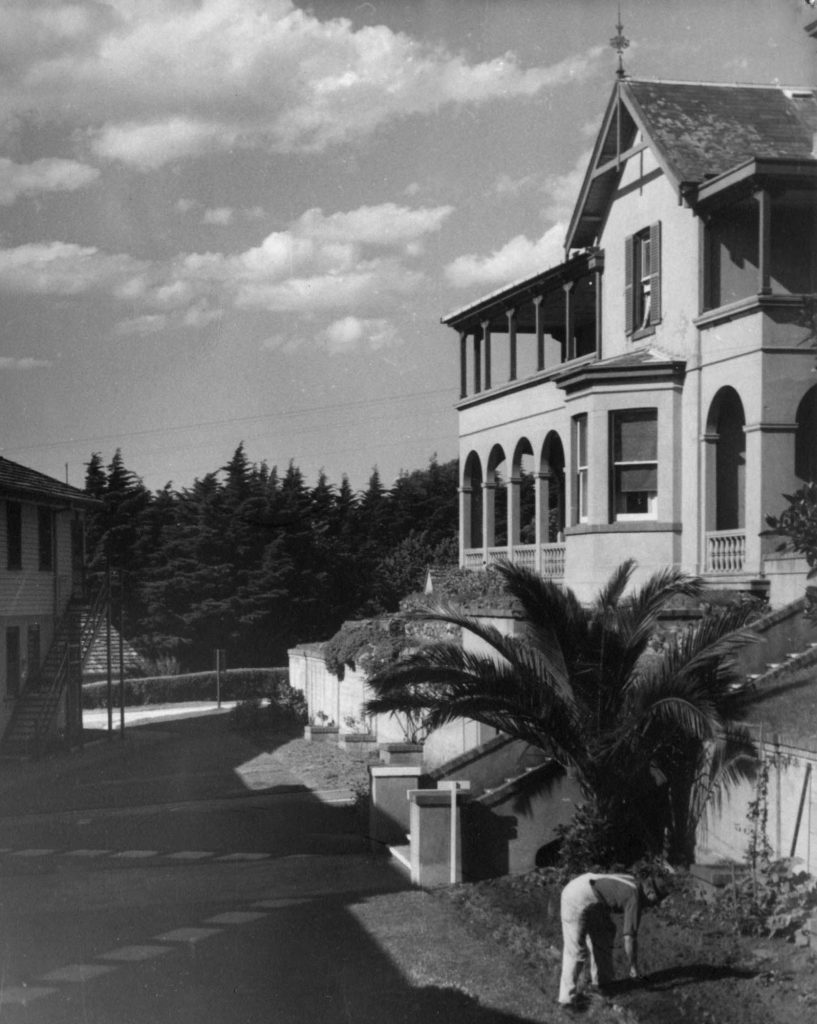
Beachleigh House Purchased
Originally built as a family home, the house became nurses’ accommodation, and the hospital built The Children's Orthopaedic Hospital on the adjoining land.
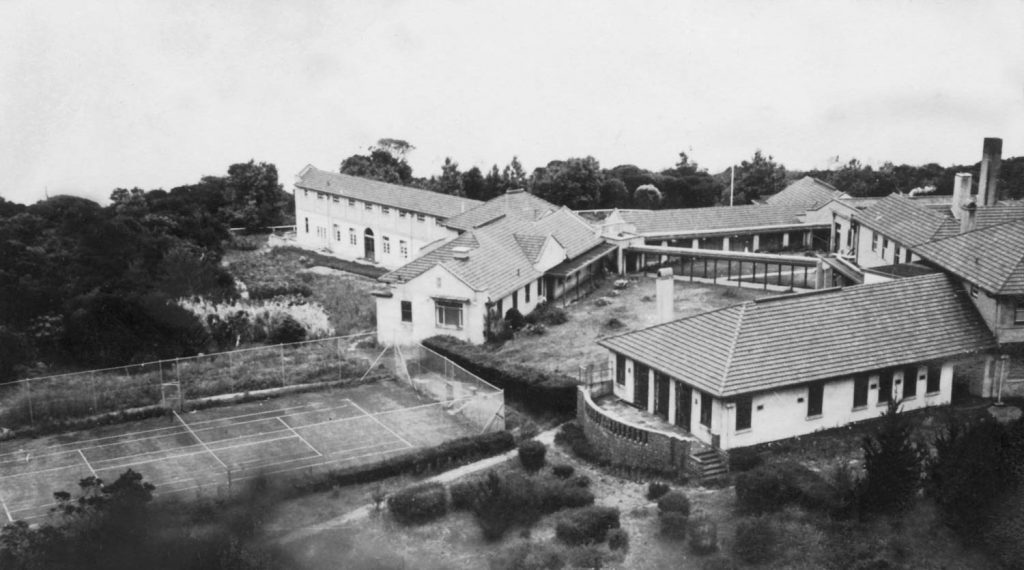
The Children’s Orthopaedic Hospital, Mt Eliza
The Children's Orthopaedic Hospital opened with capacity for 100 beds. Patients with tuberculosis, osteomyelitis, infantile paralysis and polio were provided with a facility specially-designed to meet their needs.

First Social Worker Employed
Isabel Hodge was the first social worker at the hospital, she quickly demonstrated the value of her role.
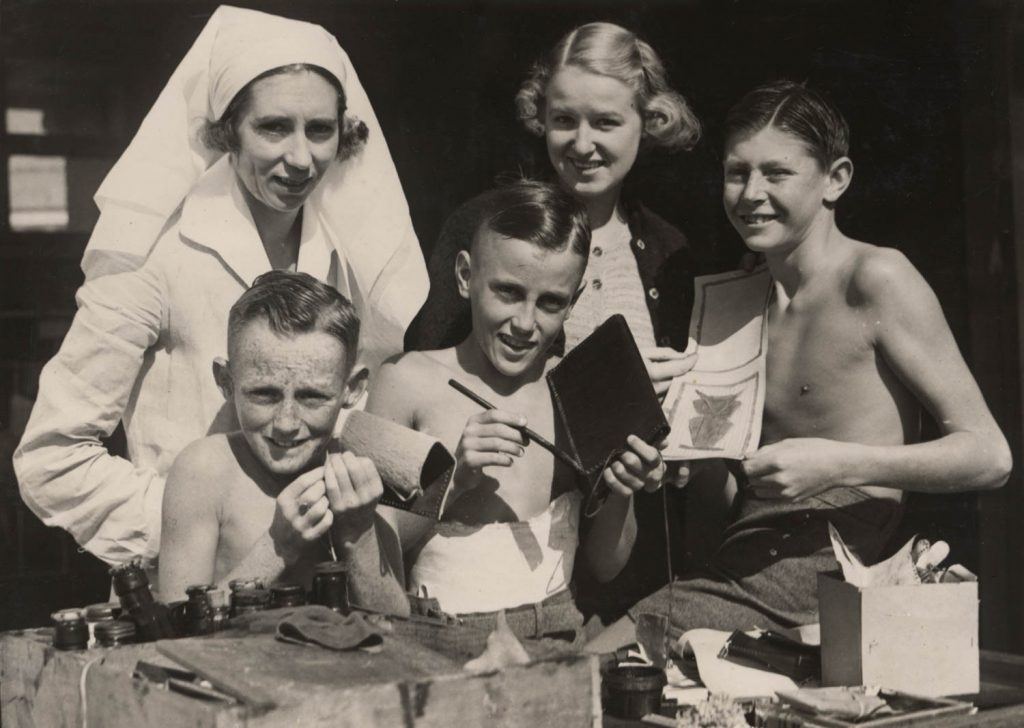
Occupational Therapy
The Children's Orthopaedic Hospital used occupational therapy to help children develop practical skills and strengthen their muscles.

Craft Hostel Designed for the Children’s Orthopaedic Hospital
A £4,500 donation by Lord Nuffield saw plans for a facility to teach vocational skills to disabled teenagers.
Ruth Drake
Drake initiated services that became known as Speech Therapy, Audiology, and Psychotherapy. She introduced the hospital to the concept of ‘play therapy’. She was with the hospital until 1964.
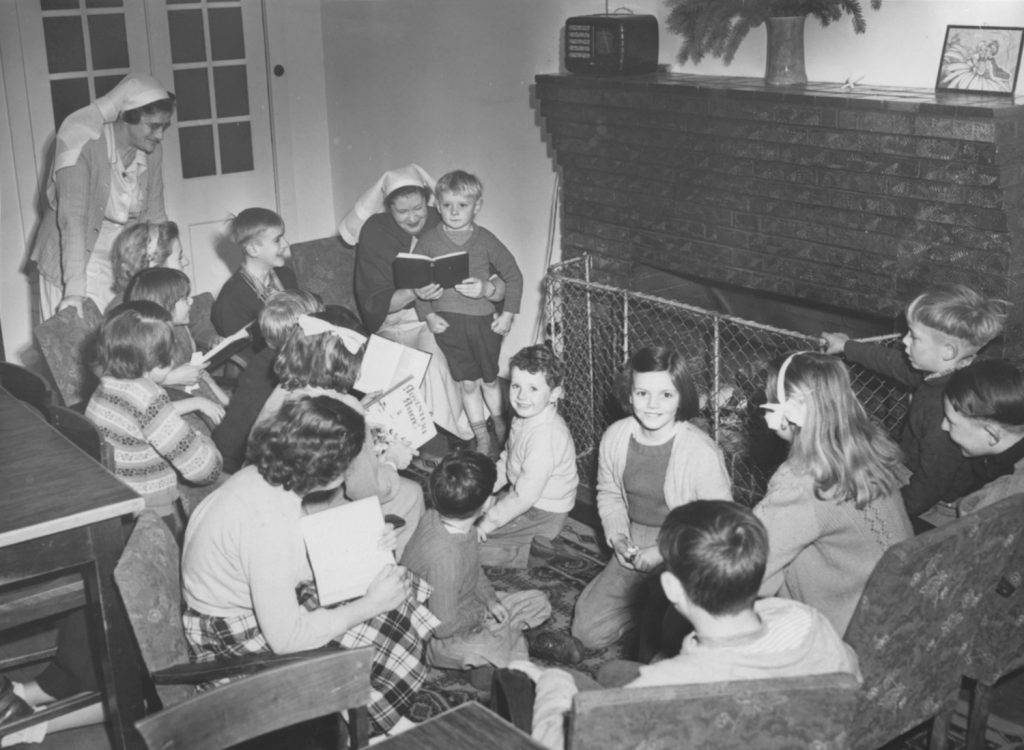
Sherbrooke Convalescent Home
Established with funds generously donated by philanthropist C M Wilson, the Sherbrooke Convalescent Home operated until 1957 and worked as a significant load relief for The Children's Orthopaedic Hospital.
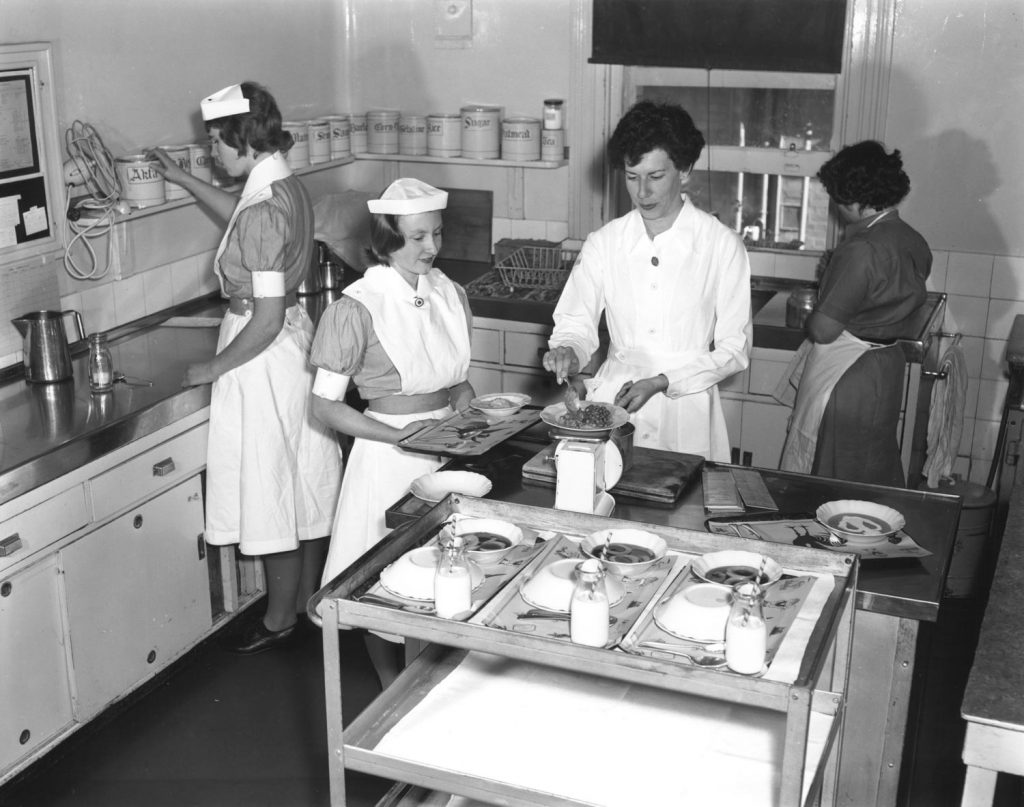
Dietetics Clinic Established
While the department was established in 1938, it wasn’t until 1940 that control of the kitchens and menus was relinquished to the dietetics team.
Medical Imaging Department Established
Cyril Murphy was the first chief photographer. Joe Szczepanski filled the role at The Children’s Orthopaedic Hospital from 1950.
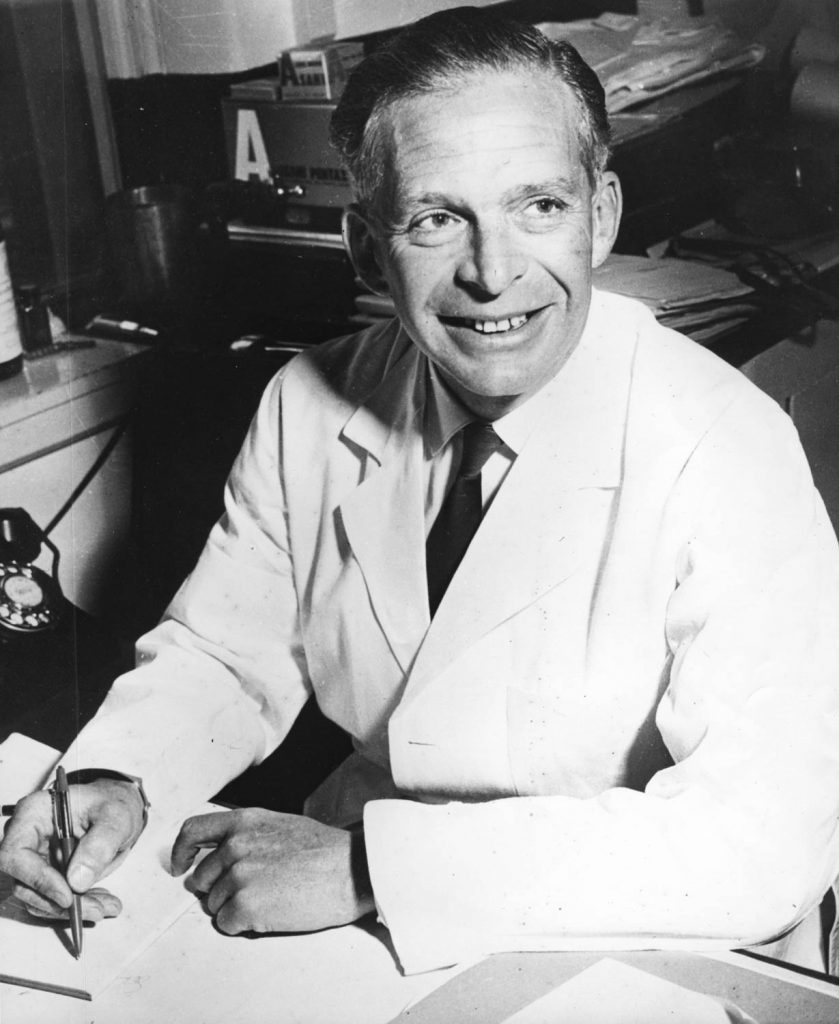
Dr John Perry
Appointed director of pathology, Perry managed an expansion of the department. He became medical director from 1960 and oversaw the move from Carlton to Parkville.

New Parkville Site Allocated
10 acres of Royal Park was pegged out as the site for a new hospital premises.
Library Re-named in Honour of Dr J W Grieve
After Grieve’s passing in 1948, Dr Howard Williams petitioned for the library to be named in his honour.
Staff System Reform
Honorary staff positions were symbolically re-named senior medical staff. Staffing reform meant the hospital was able to attract talented new staff.

Child Psychology Department Established
Led by Ruth Wertheim and John Williams.

Royal Assent Granted
After seven years of lobbying from the Committee of Management, royal assent is granted. The hospital is officially re-named ‘The Royal Children’s Hospital’ (RCH).
Daily Visiting Allowances Introduced
Ward subdivisions made way for liberalisation of visiting rules and in his role as medical director, Professor Vernon Collins CBE introduced daily visiting allowances.
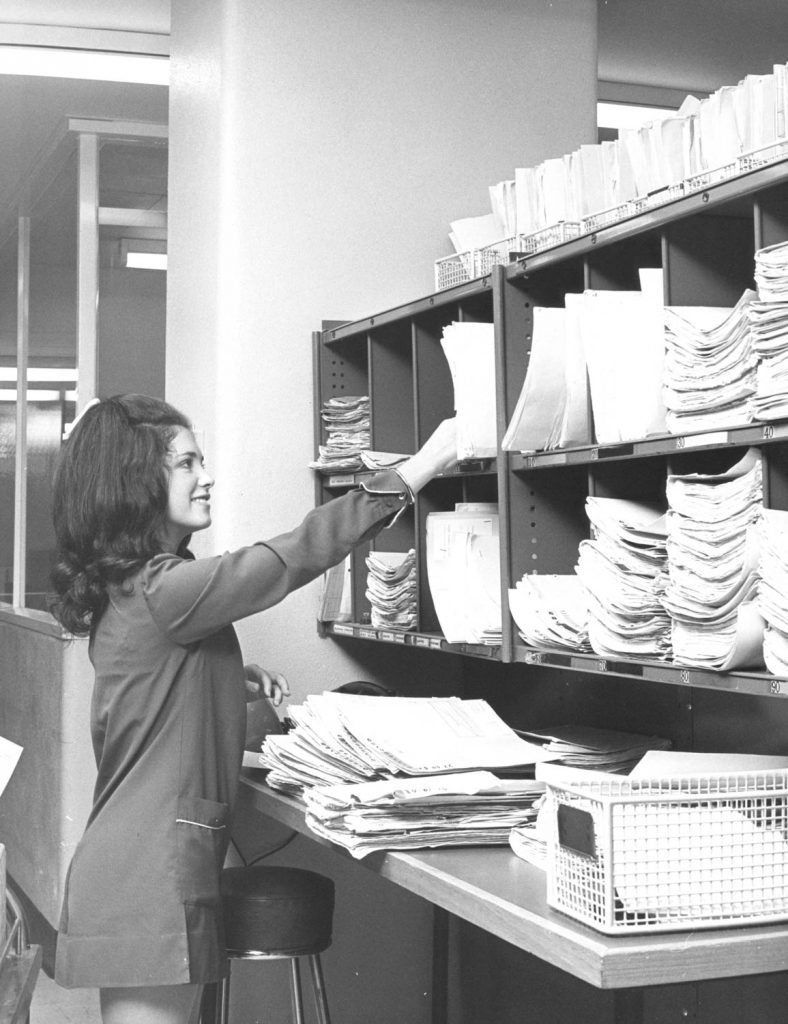
Medical Records Department Established
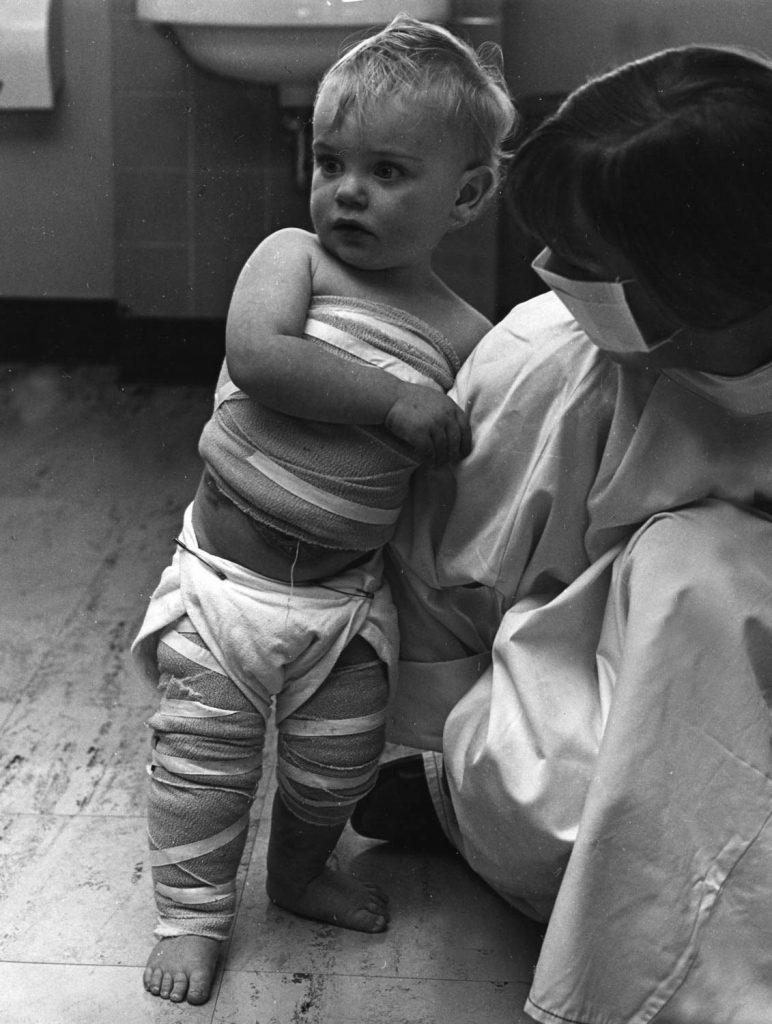
Burns Unit Established
Dr A Murray Clarke led the establishment in response to the high occurrence-rate of patients admitted with burns.
Development of a Postgraduate Course in Paediatric Nursing

Beginning of Work on the Main Block for the New Parkville Hospital
Image credit: Laurie Richards Studio
The Committee of Management Introduced Provisions and Scholarships to Encourage Research
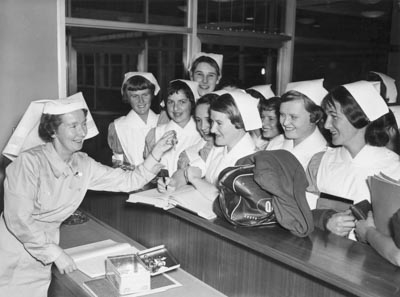
A New Nurses’ Home
The first building to be completed on the new Parkville lot - nurses were shuttled back and forth to the Carlton hospital.
Image credit: Laurie Richards Studio
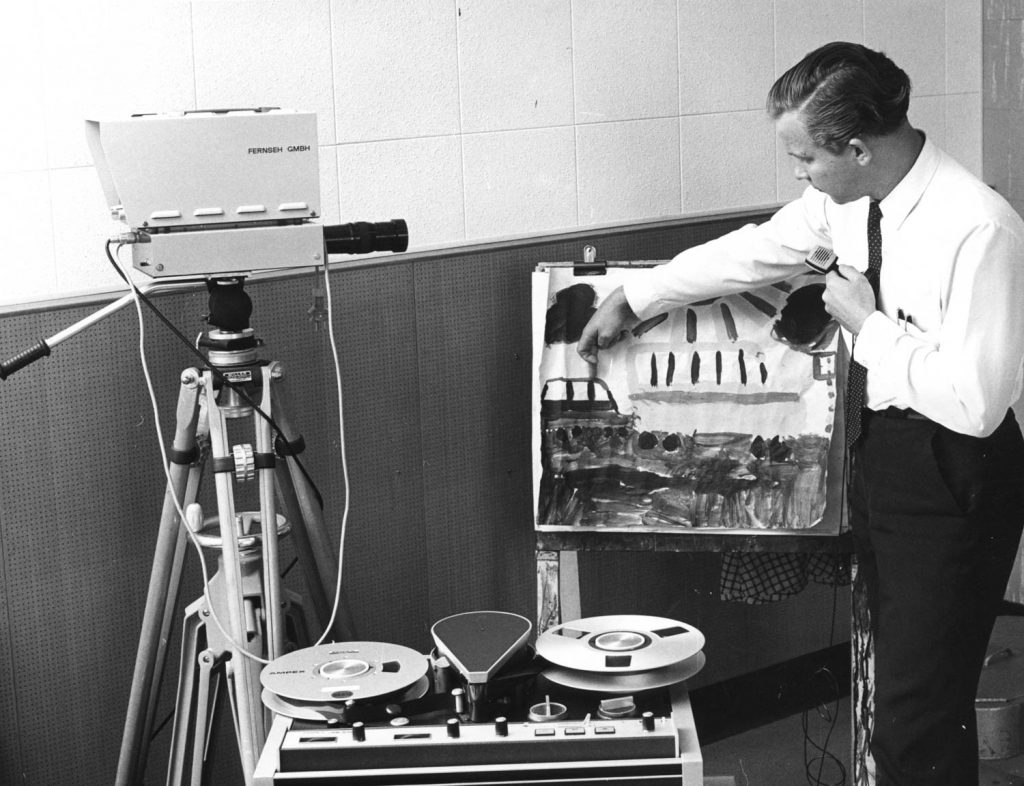
Eddie Keir OAM
Keir became chief audiologist and remained in the role until 1997. He had a background in electrical engineering and child psychology and under his guidance the Audiology Department addressed the behavioural problems of children with hearing impairments.
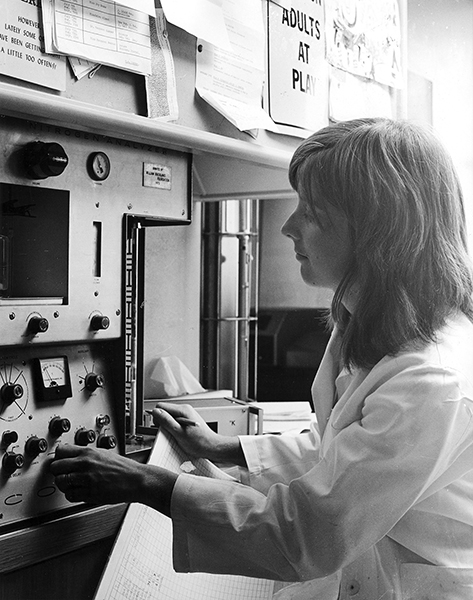
The Royal Children’s Hospital Research Foundation Established
The foundation’s objectives were to support and promote research in all areas of child health.
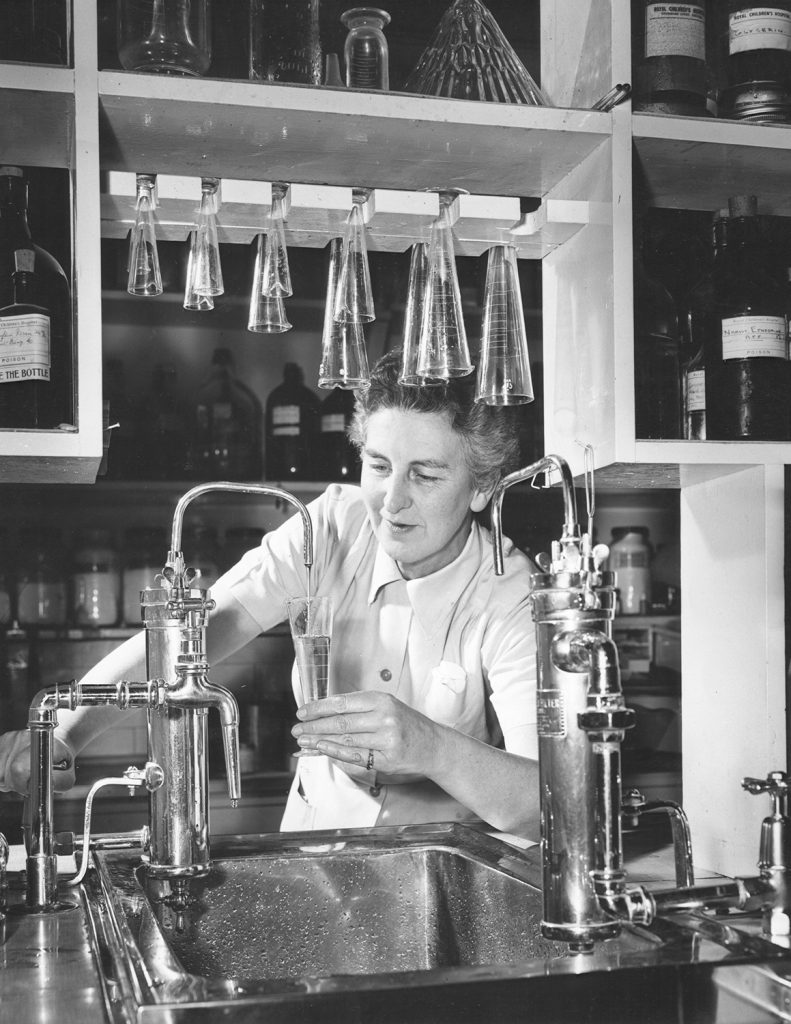
Dorothy Cook
Cook became chief pharmacist and was instrumental in the rapid growth of the department, particularly after the move to Parkville.
Image credit: Laurie Richards Studio
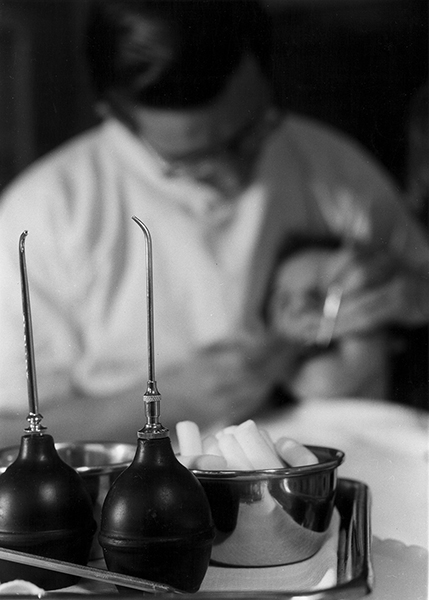
Dental Clinic Formally Established
The hospital has provided dental services since 1899, however the full-time appointment of Associate Professor Roger Hall as paediatric dentist in 1960 resulted in the development and independence of the department.
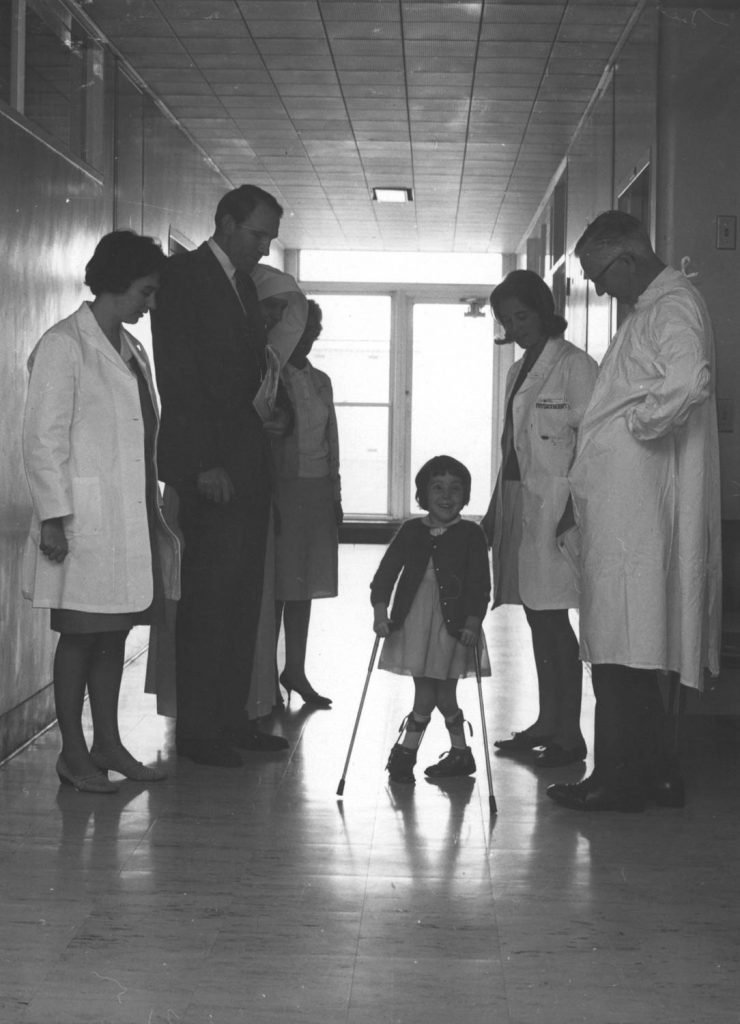
The Spina Bifida Clinic Established
Co-ordinated by Dr Keys Smith, the clinic was soon the second biggest in the world.
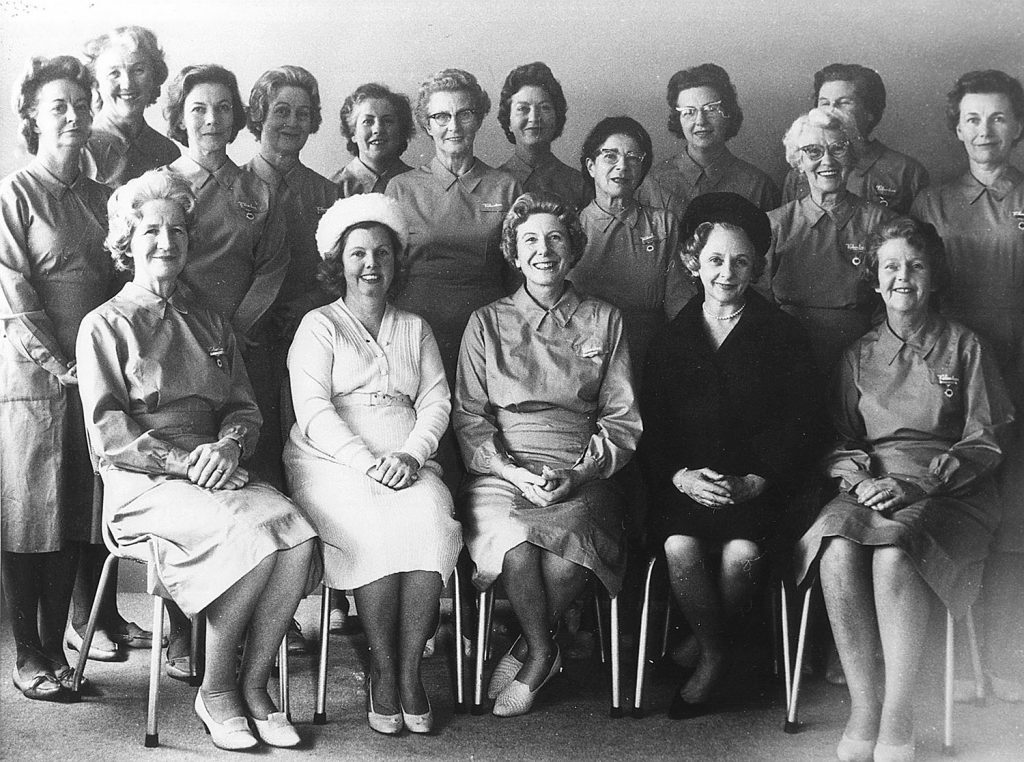
Volunteer Services Established
Carmen Winter held a key role in organising this new service.
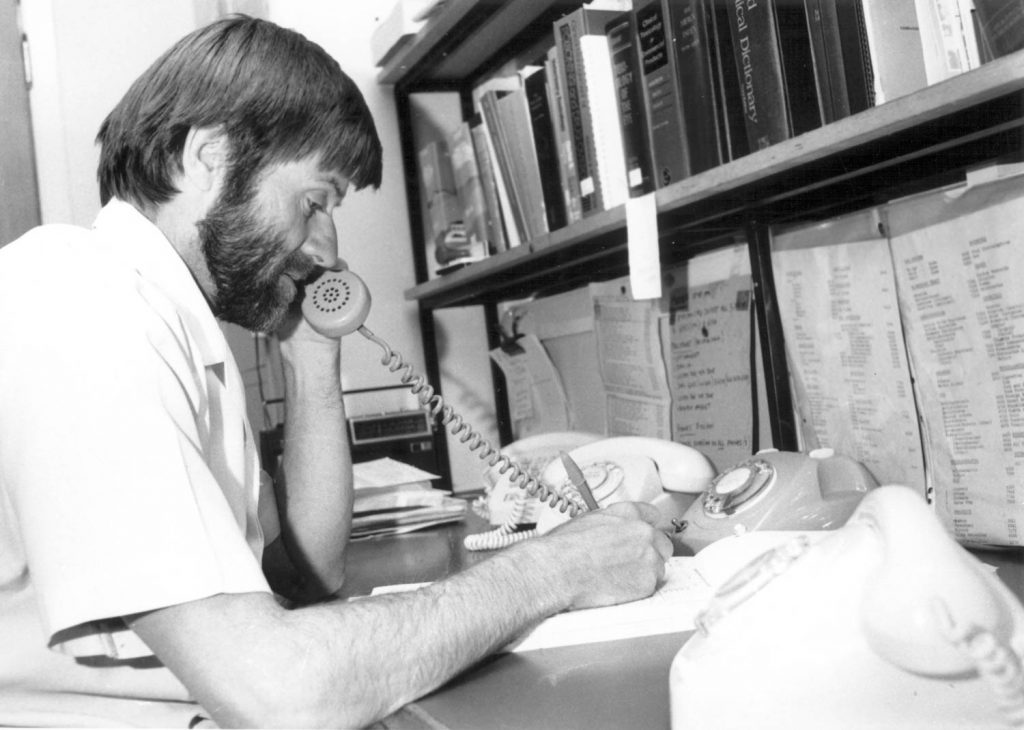
Poisons Information Centre Opened
Dr John Perry was a key instigator of the establishment of a poisons register and resource for parents and health professionals.
Move to New Campus Completed
January 20th, 1963
Patients are moved from the Carlton hospital to the new Parkville hospital.
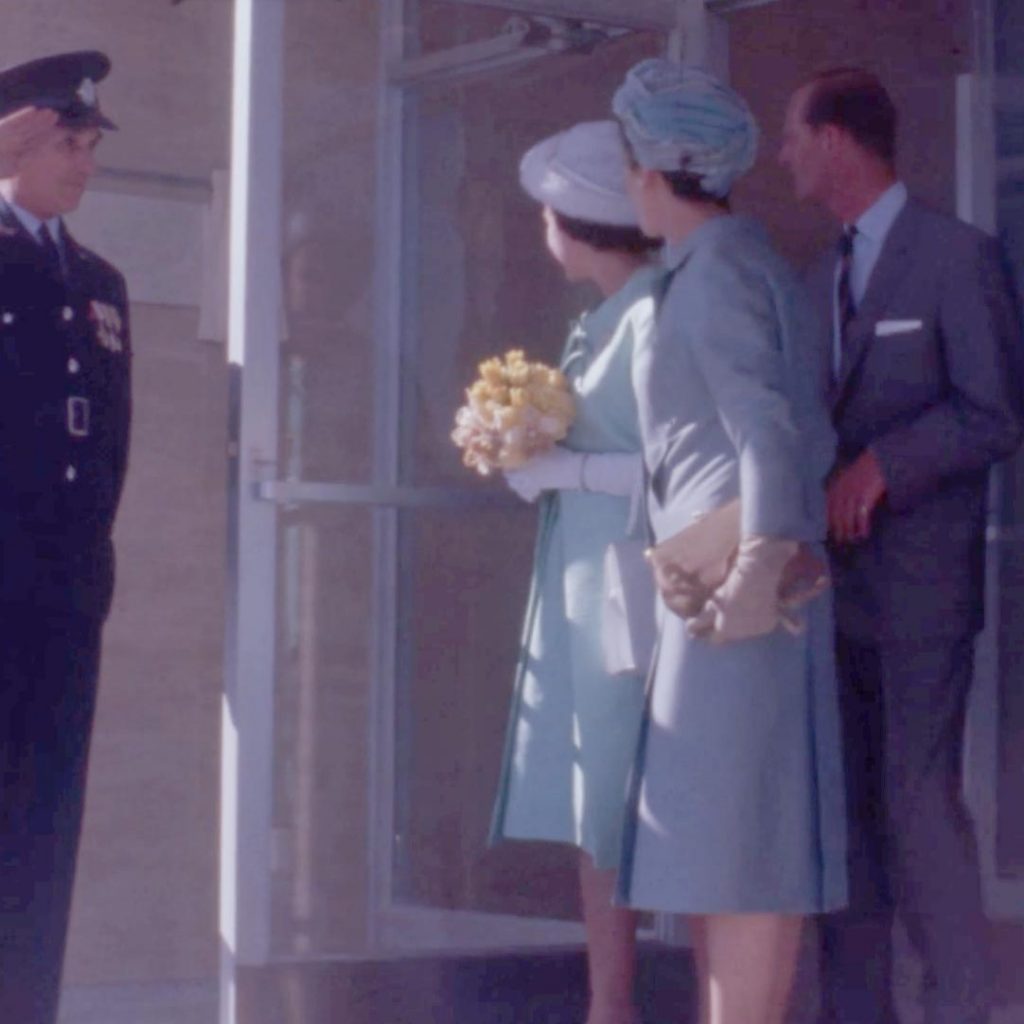
Official Parkville Opening
February 25th, 1963
Queen Elizabeth II and Prince Philip officially open the new premises at Parkville.
A Designated Intensive Care Unit Area is Established
Anaesthetists Dr John Stocks and Dr Ian McDonald began to implement prolonged endotracheal intubation.
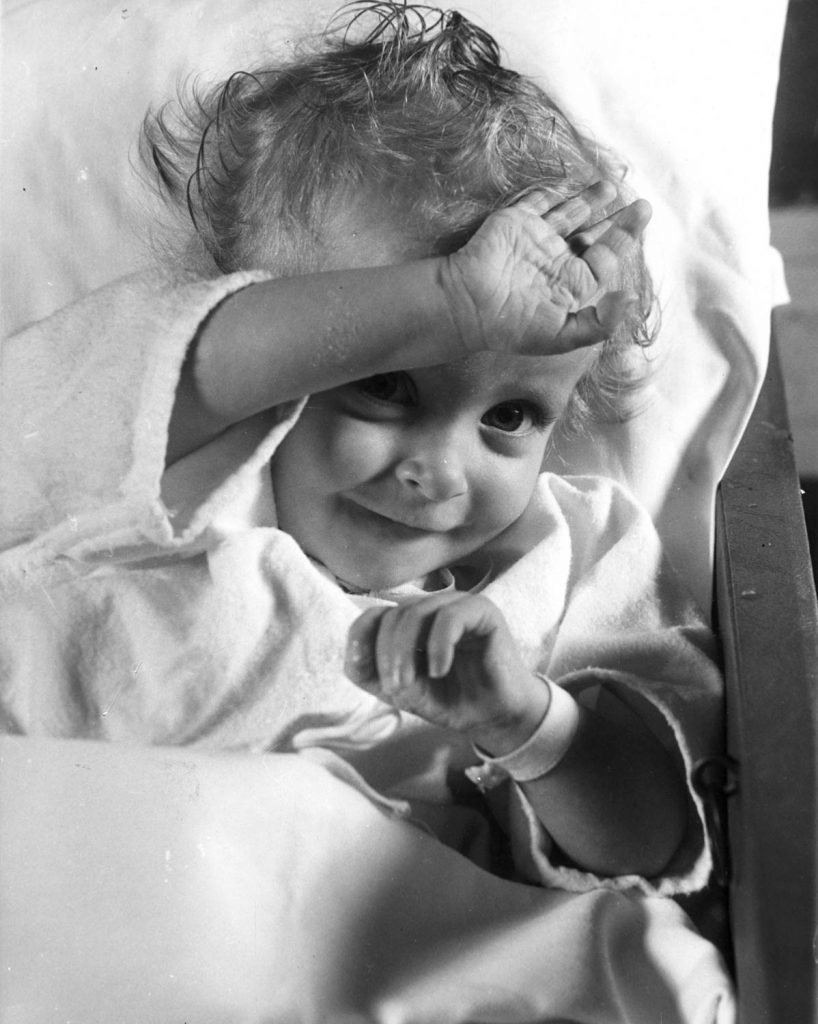
Cardiology Department Formally Established
Cardiology as a specialisation had been developed since the 1950s under the leadership of Dr Mostyn Powell. Powell’s trainee Dr Alex Venables was appointed director.

Opening of the Uncle Bobs Club Rehabilitation Centre, Chapman Street, North Melbourne
The Uncle Bobs club raised funds to refurbish the building for use as a rehabilitation centre.

The Royal Children’s Hospital School
The school was first established as an annex to The Children's Orthopaedic Hospital. When the long-term patients moved to Parkville in 1971, the school did, too. Now known as the RCH Education Institute, the department keeps patients connected to learning.

The Children’s Orthopaedic Hospital Closed
A reduction in the occurrence of diseases that caused need for the facility meant that The Children's Orthopaedic Hospital was able to close its doors.

New North-west Building Opened
Intensive Care Department Established
Initially part of the Anaesthetic Department, Intensive Care became autonomous, with Dr Geoff Barker as director.
Dedicated Psychiatric Ward Established
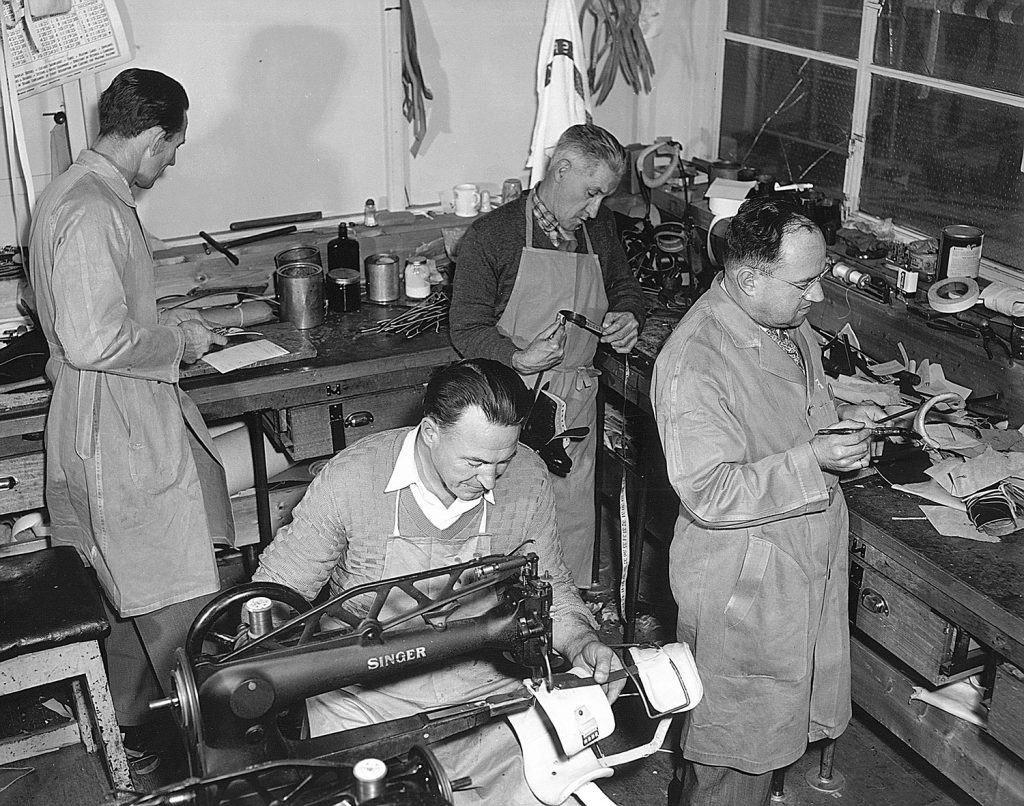
Splint Shop Became Orthotic Department
From the 1950s, due to increased efficacy and implementation of immunisation, contagious diseases such as bone tuberculosis began to decline. With the diminished need for splints, in the 1970s the Splint Shop began to serve a wider range of conditions, using synthetic materials to create orthoses and prosthetics.
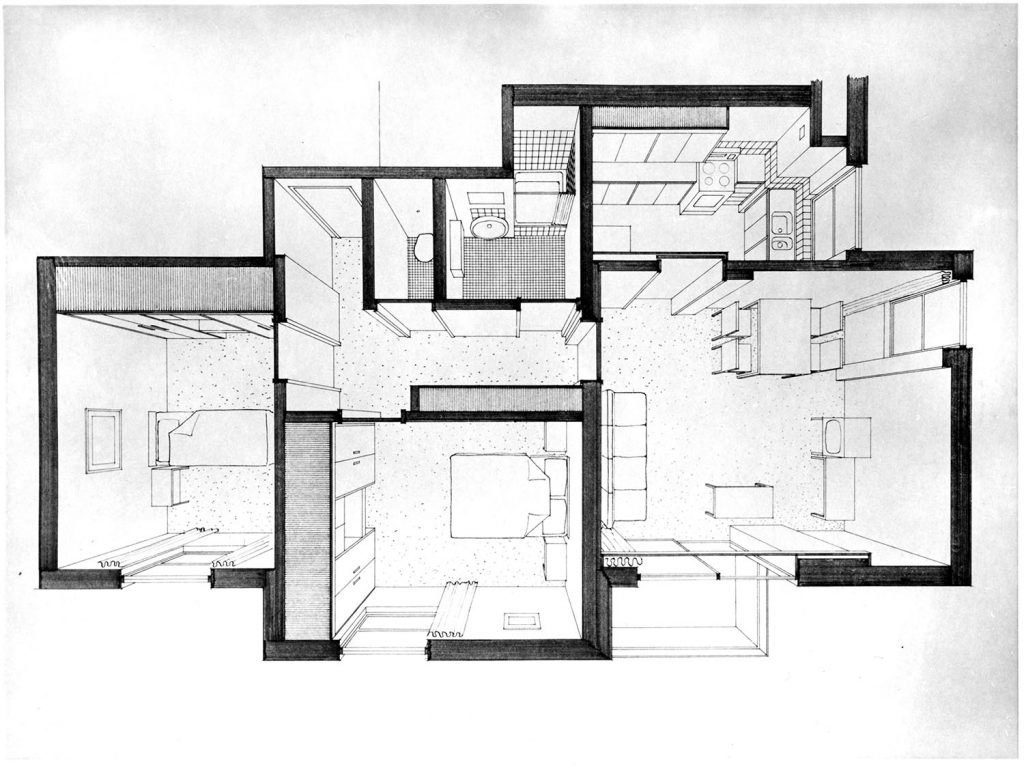
Ferguson House Formally Opened
Situated on Flemington Road, Ferguson House provided accommodation for hospital staff members.
Play Therapy Program Instigated
Fiona Anderson was head-hunted from Great Ormond Street Children’s Hospital to develop the programme.

Child Accident Prevention Centre
Established by a former staff member, Dr A Murray Clarke, with the aim of preventing accidents through education and research.
Change of Management Structure
State legislation mandated that the committee size was reduced from 21 to 12 members. New members were appointed by the Minister of Health and the hospital’s political autonomy was reduced.
Paediatric Emergency Transport Service (PETS) Established
Uncle Bobs Club Child Development Centre
In use by the hospital for rehabilitation since 1969, the building was renamed and is still in use for early childhood intervention services.
Reorganisation of Hospital into a Divisional Structure
The hospital took steps to meet accreditation criteria and clarify the administrative structure.
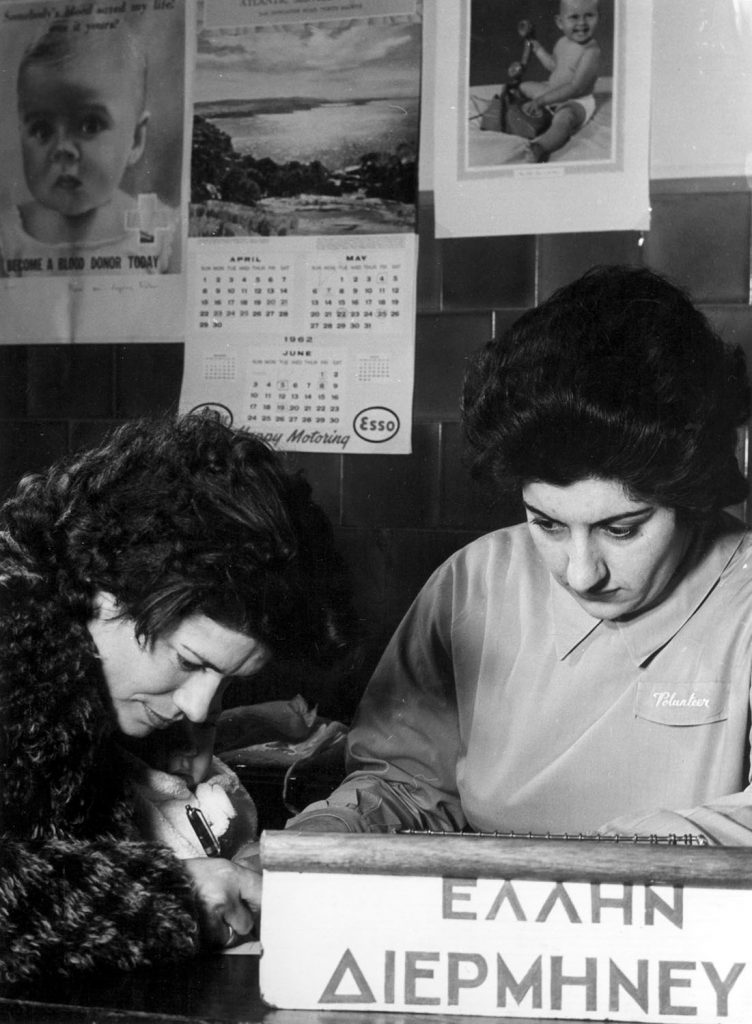
Interpreter Services Established
Silvio Proy became the hospital’s first formal medical interpreter in 1971. Interpreter Services became its own department in 1982 and Proy established standards and training for professional interpreters. Prior to this, volunteer services had been heavily relied on to interpret for families.

Educational Resource Centre
Led by Lynda Stephens, photographers, film makers, designers and illustrators began a program of creating educational and entertaining content used by the hospital and clinics state-wide.
Establishment of the Adolescent Ward
This allowed children over age 14 to receive treatment at the hospital.
Speech Pathology
Speech pathology became a stand-alone department, with Bronwyn Parry-Fielder in the lead role, which she held for 22 years.
Foundation of the Murdoch Institute for Research into Birth Defects
The Murdoch Institute was a leading centre for genetics research, worldwide.
Gatehouse Centre Established
Originally named the Child Protection Unit, the department’s focus is on children suffering from abuse and maltreatment.
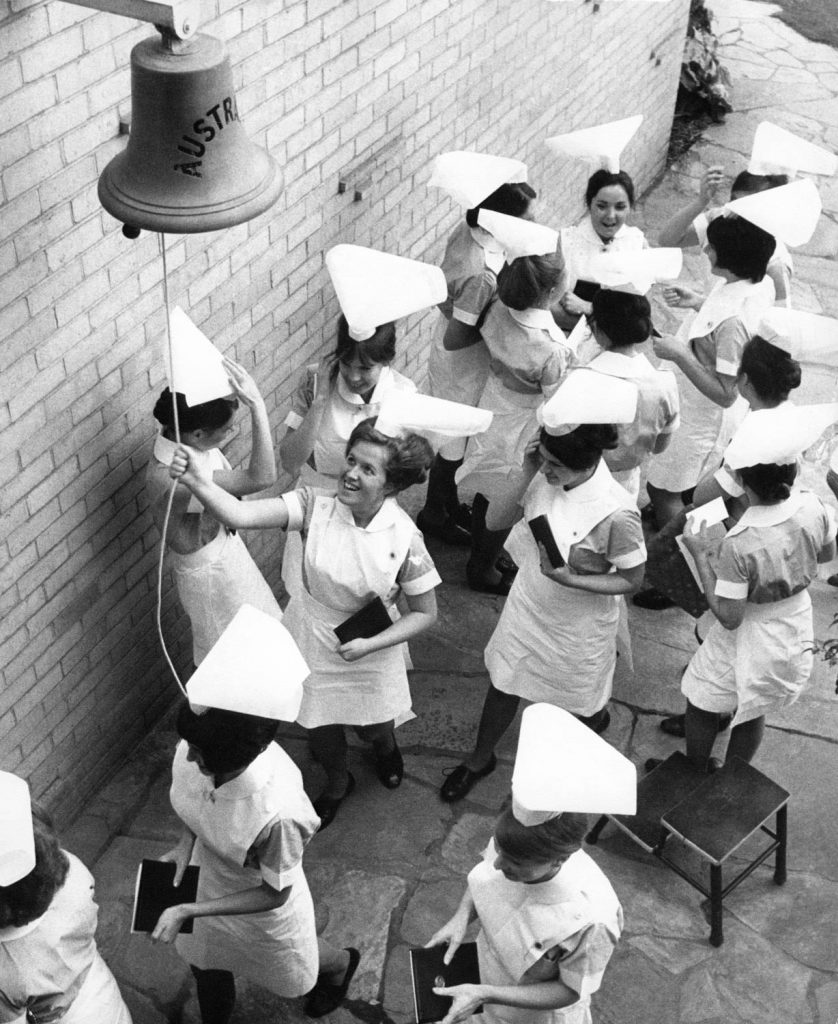
End of Hospital-run Nurse Training
Last students graduated from the school of nursing run by the hospital.
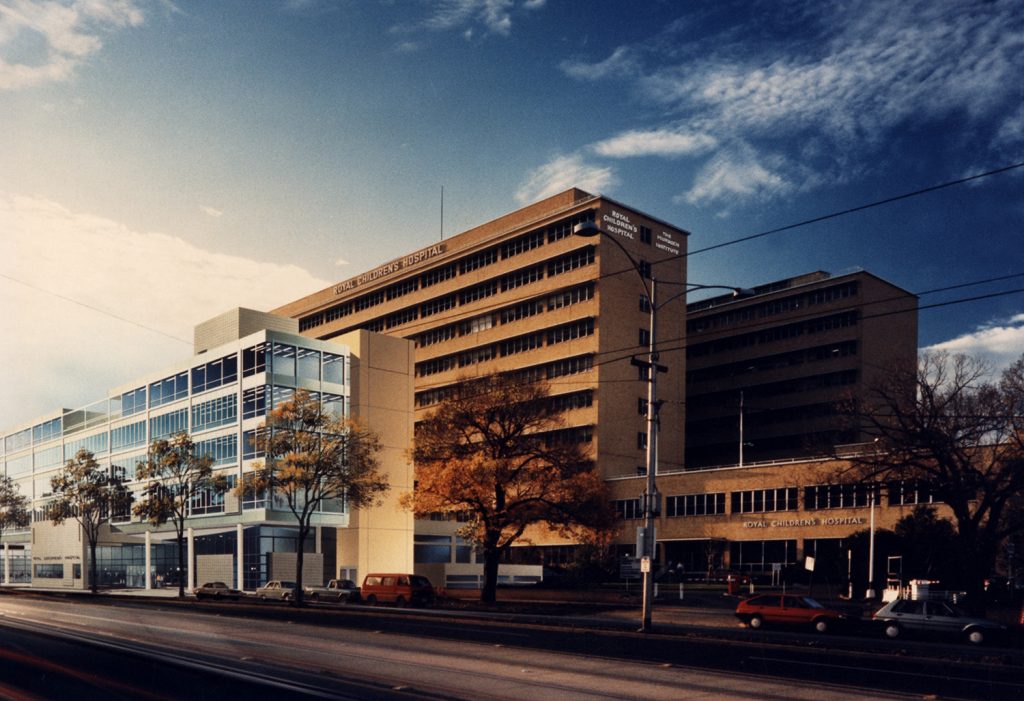
Good Friday Appeal Front Entry Building Opened
Care by Parent Unit Opened
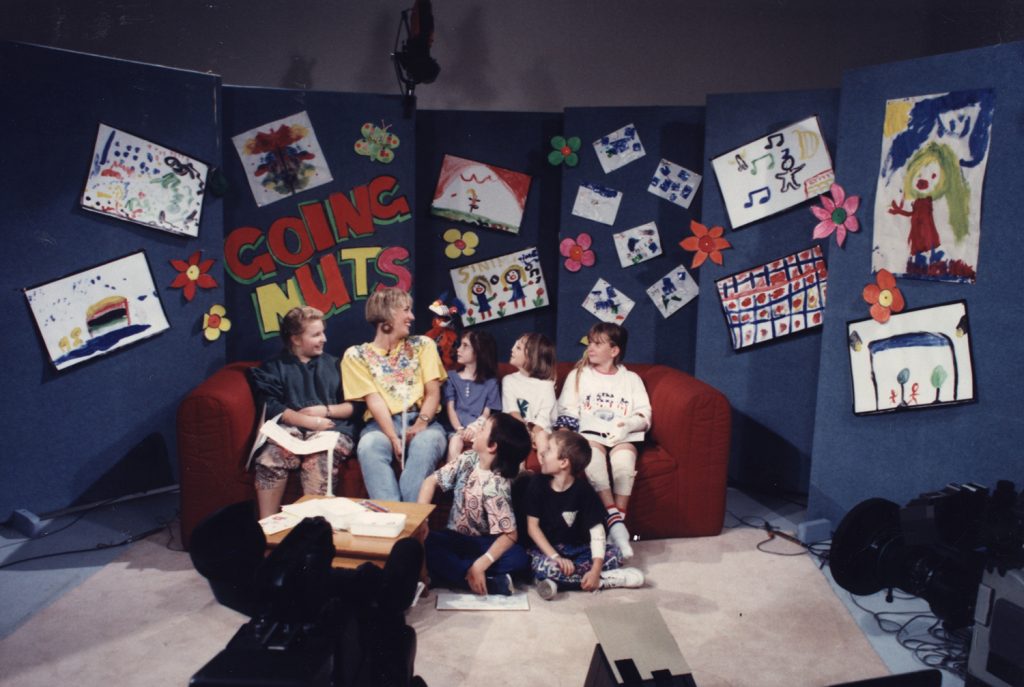
‘Going Nuts with Macadamia’ First Aired
The Education Resource Team produced the hospital's first in-house television show. Now known as ‘Be Positive’, the show provides patients with a morale boost, entertainment, and familiarisation with hospital equipment and procedures.
[Proudly sponsored by the team and customers of Woolworths.]
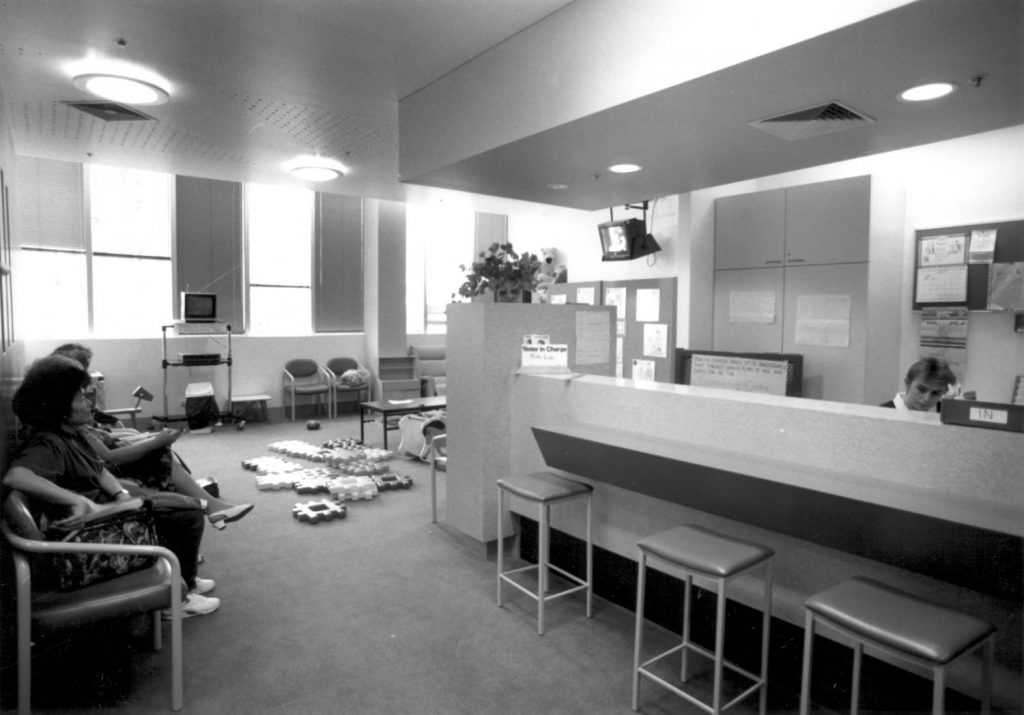
Day Centre Opened
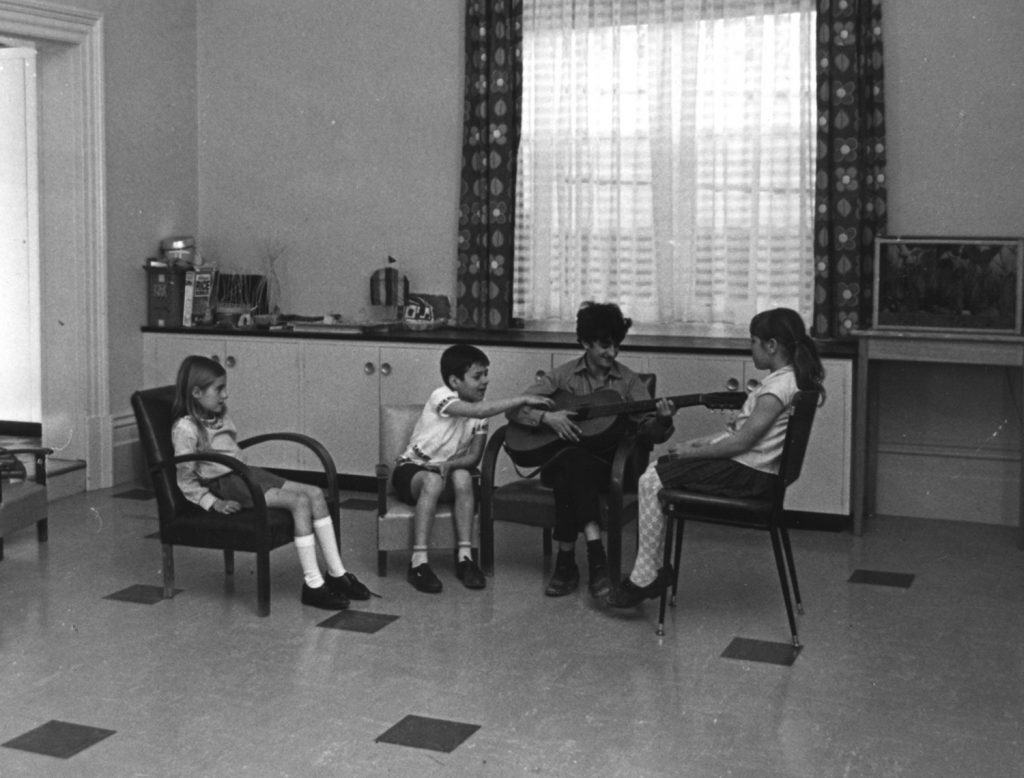
Music Therapy Program Established
Funded by the University of Melbourne.
Aboriginal Liaison Policy Advisory Committee Established
The committee consisted of hospital staff and Indigenous community members.
Centre for Community Child Health Established
The centre supports health and development of vulnerable and disadvantaged children.
Women’s and Children’s Health Care Network
Victorian Government strategy merged the Children’s and the Women’s Hospital. This partnership was in place until 2004.
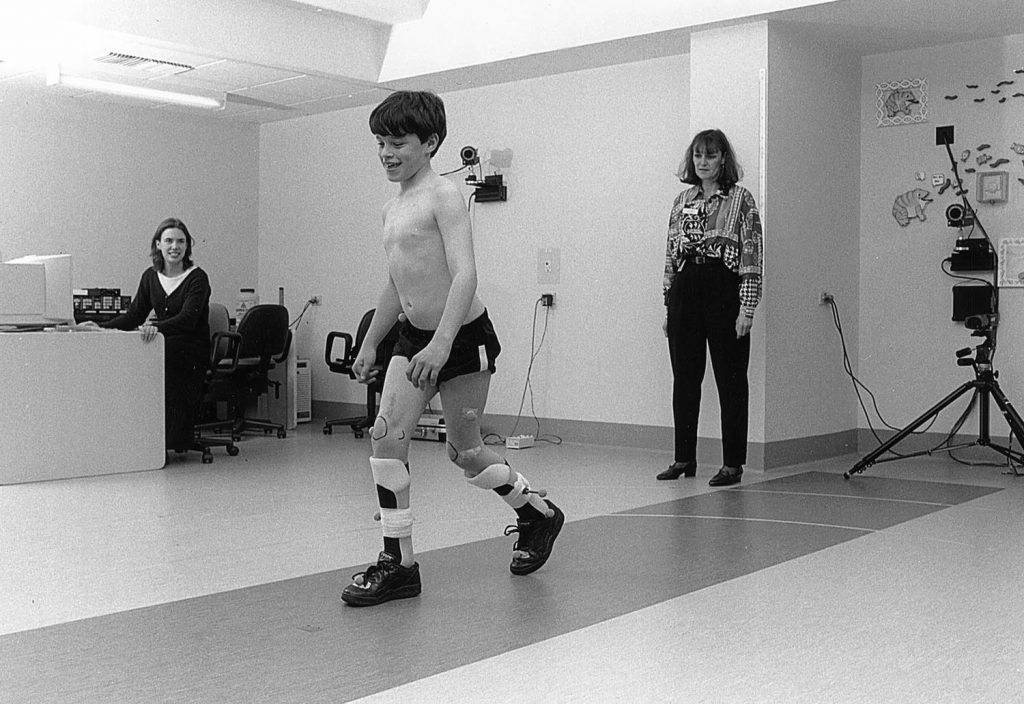
First Gait Laboratory in Australia
For treatment of orthopaedic conditions.
The University of Melbourne School of Graduate Nursing Established
Professorial Chair of Child Health Nursing based at the RCH.
RCH International Established
Based on the success of Professor Garry Warne AM’s annual lectures at the National Hospital of Paediatrics in Vietnam, a new department was established. Initially known as Children's Hospital Asia-Pacific Alliance, RCH International used grants to build programs, design facilities and provide training for Asian hospitals and their staff.
Women’s and Children’s Healthcare Network Renamed Women’s and Children’s Health
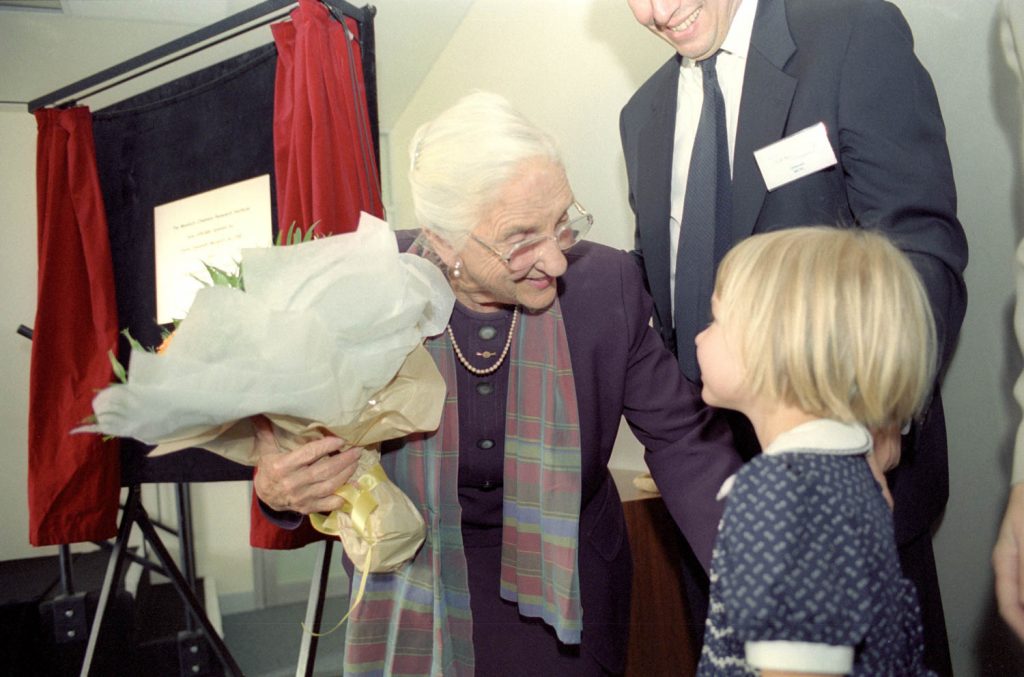
Murdoch Children’s Research Institute
The Murdoch Institute and the hospital partnered to form the MCRI, a key relationship and research arm for the hospital.
Image credit: Robert Reitmaier

‘Hospital Lingo’ First Aired
Now a popular weekly hospital television segment, the interactive show aims to reduce patient anxiety through familiarisation with hospital apparatus, while also providing entertainment.
[Proudly sponsored by the team and customers of Woolworths.]
Image credit: Alvin Aquino

Establishment of the Family Resource Centre
Now known as the Family Hub, the space provides space and entertainment for families spending time at the hospital.
Image credit: Peta Philp
Independent Governance
The hospital transitioned to independent governance after nine years as part of Women’s and Children’s Health partnership with the Women’s Hospital.
Short Stay Unit Established
Designed to streamline the admission of patients who present to the Emergency Department in need of short-term care.
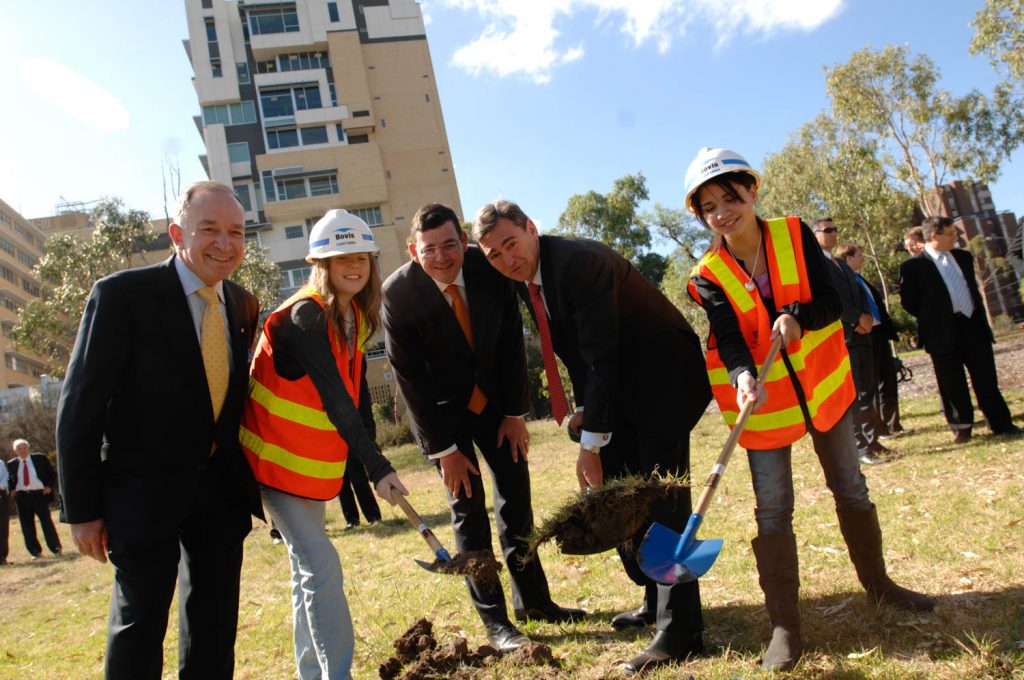
Plans for New Hospital Building Unveiled
First soil turned on site at 50 Flemington Road, attended by Chairman Tony Beddison AO, VIC Premier John Brumby AO, and Minister for Health Daniel Andrews.
Image credit: RCH Medical Imaging
The Hospital Became 100% Smoke Free
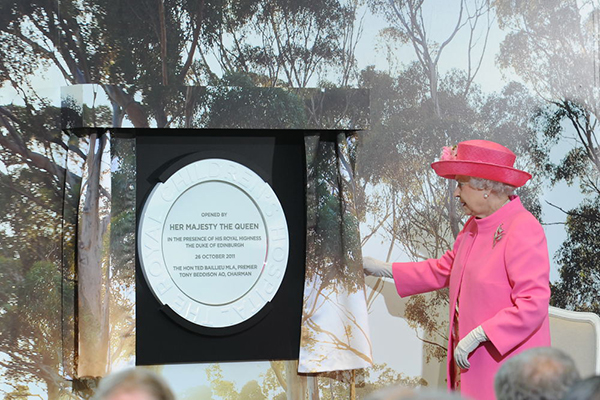
New Premises Officially Opened
October 26th, 2011
Queen Elizabeth II opened the new hospital premises at 50 Flemington Road, Parkville.
Image credit: Robert Reitmaier
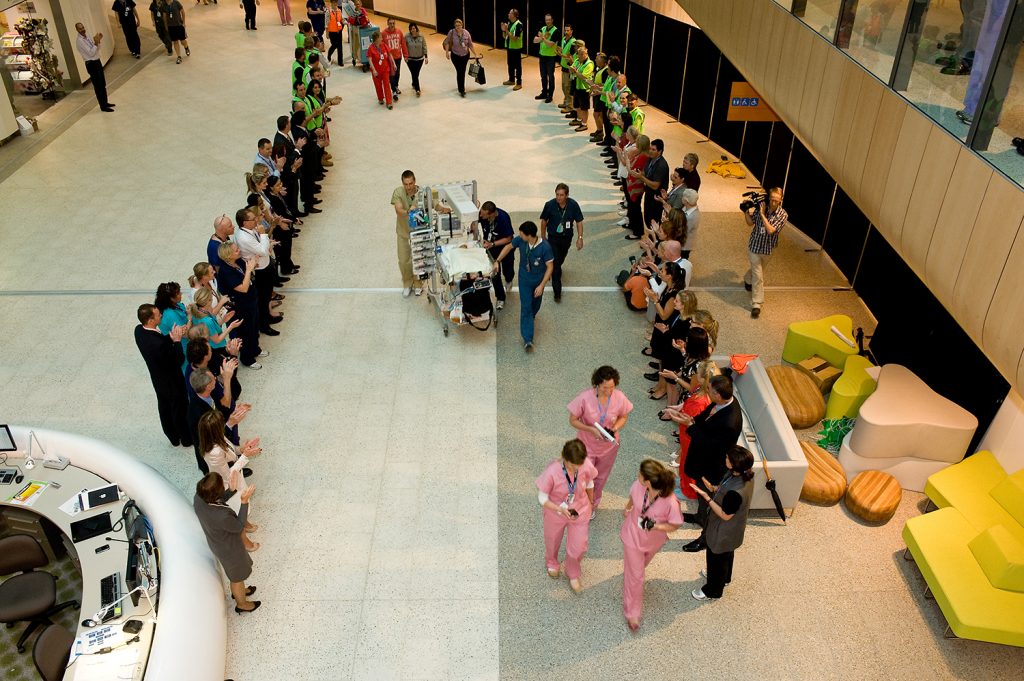
Patients Moved to the New Parkville Building
November 30th, 2011
The move was meticulously planned to ensure that services and care were uninterrupted.
Image credit: Alvin Aquino

The Gender Service Established
Established to help improve the physical and mental health outcomes of patients who are trans or gender diverse.
Image credit: Alvin Aquino
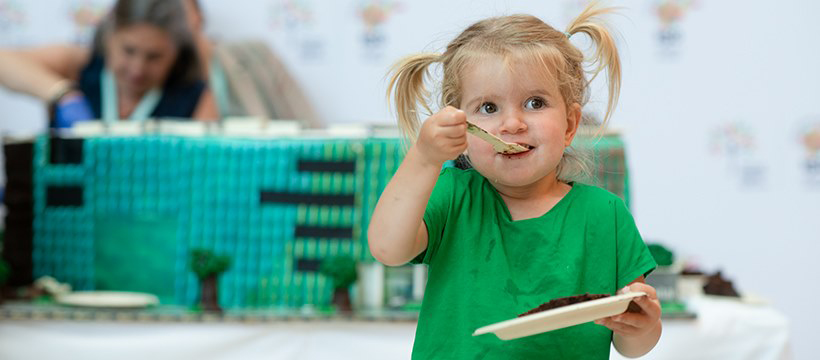
150th Anniversary Since Foundation
The hospital celebrates 150 years of great care for Victorian children.
Image credit: Alvin Aquino




































































